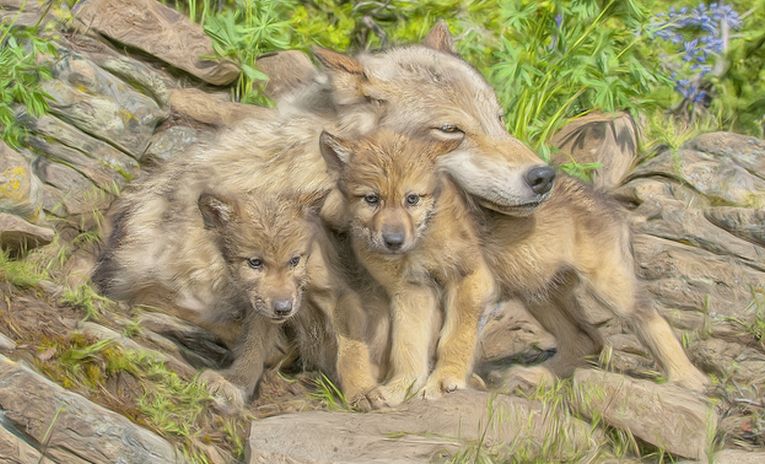On June 2, 2014, the first cubs of Oregon’s wandering grey wolf, Canis lupus, were reported in the Cascade Mountains. Their birth should have been in April. This adventurous guy has moved around a lot since 2011 and made a neat home for himself in the western forests. Since the 1940s, no packs have roamed these remote areas, ripe for a natural predator to keep down elk numbers and balance the system in many ways. OR-7 is the only real name given to this colonist, but I’m sure he has fans- as well as wolf-detractors. He now has pack-status in Oregon, for good or bad!
The USFWS have been up to the Rogue River-Siskiyou National Forest to check his GPS collar after his thousand mile wandering. The route took in California and possibly Idaho before he returned recently to his home range. His original
OR-7 has completed his journey without serious injury, being shot, or endangering any farm livestock. Those achievements are not unrelated, of course. The Oregon Cattlemen’s Association and Oregon Wild may be on opposing sides of a fence, but both agree that this wolf has something going for him. 2 members of his Imnaha pack were almost shot for attacking livestock. The next job for USFWS is to replace his GPS collar, whose batter needs replacing. As for the hunters who enjoy such things, there will be no legal killing of this wolf, although several have been shot without reason.
The wilding of North America, parts of Europe and several other locations is progress for humanity, that has spent its history destroying predacious or valuable animals. The beaver, the bear, sharks and even the birds of prey have an enormous role in our environment. We need them to maintain the consumer population for us, so that vegetation and these herbivores remain in the correct proportions. Look at the mess of algal blooms and weeds that we have been creating on land and sea. The correction of our ecosystems will be achieved with hard work and education about our responsibilities. The sooner the better!
The rewilding of Europe with bear, bison, eagle and crane is covered in this article, the small, overcrowded continent having many more conservation problems than North America. The US grey wolf situation is clearly laid out here by the USFWS.










